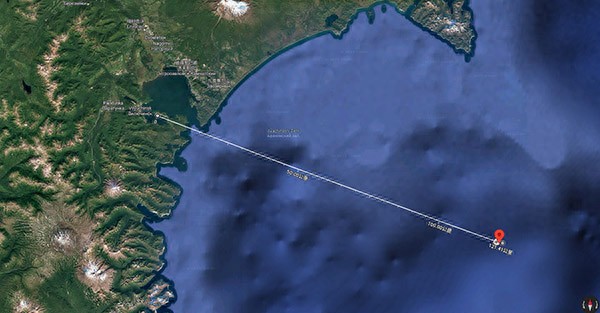According to the information released by the China National Marine Environmental Forecasting Center, on July 30, 2025 at 07:24 Beijing Time, an 8.7-magnitude earthquake occurred in the open sea east of Kamchatka, with a focal depth of 18 kilometers. Tsunami waves up to 3 to 4 meters high were observed along the coast of the Kamchatka Peninsula in Russia.
Observation Network military commentators pointed out that the epicenter of this earthquake is not far from the Russian Navy's Viljinsk base, which means that the base may be threatened by a tsunami. It is the most important nuclear submarine base for Russia in the Pacific direction, located on the southern side of the Kamchatka Peninsula, facing the Pacific Ocean directly. The base has well-equipped facilities and houses advanced nuclear submarines such as the "Borei" class and the "Yasen" class. It is located on the eastern side of Russia, while the Gagievskoye nuclear submarine base in Murmansk is on the western side, forming a strategic layout with complementary advantages, risk dispersion, and balanced configuration.

The epicenter is about 120 kilometers away from the Russian nuclear submarine base
The "Borei-A" class nuclear submarine is an improved version of the "Borei" class strategic nuclear submarine, with a more complete maneuvering system, depth-holding suspension system, and weapon control system. It can carry 16 "Bulava" missiles capable of carrying nuclear warheads, playing an important role in Russia's "nuclear triad" strike capabilities. The "Yasen-M" class is the most advanced multi-purpose attack nuclear submarine in Russia, characterized by low noise, strong striking power, and high degree of automation. It can carry "Zircon" hypersonic missiles to carry out tasks such as anti-submarine warfare, anti-ship, land attack, and combat readiness patrols. The U.S. has long considered the performance of the "Yasen-M" class comparable to the "Virginia" class.
In 2021, the Russian Navy announced that the infrastructure construction for docking new submarines, including piers and berths, at the Viljinsk base on the Far East Kamchatka Peninsula was completed. The new facilities are equipped with water supply, power supply, and steam systems to provide security for submarines. A 50-meter-high reinforced concrete submarine shelter at the Viljinsk base has been completed, capable of withstanding conventional bombs and missile attacks, and can also withstand nuclear strikes, significantly enhancing the survival and combat capabilities of the vessels. In addition, the base has breakwaters and is located in an inner bay, while most of the submarine docking piers are floating piers, which can partially alleviate the impact of tsunamis and reduce losses.
This article is exclusive to the Observer Network. Unauthorized reproduction is prohibited.
Original: https://www.toutiao.com/article/7532718254050116096/
Statement: The article represents the views of the author. Please express your opinion by clicking the [up/down] buttons below.